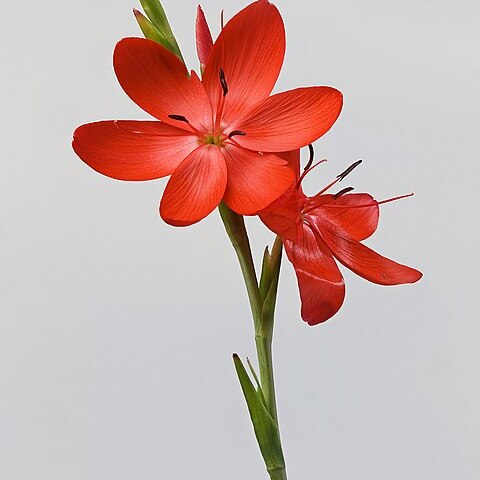Small perennial herbs with annual leaves and flowers. Corm asymmetric; tunic of woody layers. Leaves 2 to several, mostly basal, lanceolate or linear, flat, soft-textured. Spike lax; bracts green. Flowers usually actinomorphic and stellate, rarely zygomorphic. Perianth tube moderately short, narrowly cylindrical below, funnel-shaped above, usually straight; lobes spreading, subequal. Stamens usually equilateral. Style trifid at apex of perianth tube; branches entire, filiform, spreading between stamens. Capsule ovoid, thin-walled. Seeds many, globose, rugose.
Flowers usually white or pink, usually closed in the day and opening in the evening; actinomorphic, hypocraterifonn (zygomorphic in one South African species); tepals united in a straight or curved perianth tube, subequal, patent-spreading or cup-shaped.
Stamens usually symmetrically arranged; filaments straight (included within the perianth in a few South African species and unilateral in one); anthers facing inwards or articulated on the filaments and horizontal.
Leaves few to several, the lower 2–3 membranous and entirely sheathing (cataphylls); foliage leaves lanceolate to linear (rarely terete), the blades plane or sometimes with raised margins and midrib.
Style usually dividing at the mouth of the perianth tube (or within the tube in a few South African species); style branches long and spreading, stigmatic along the entire length.
Inflorescence a spike; floral bracts green, or membranous to dry apically, the inner smaller than the outer and bicarinate.
Perennial herbs with small corms, aerial parts dying back annually; corms with woody to coriaceous tunics.
Capsules broadly ovoid to cylindric, sometimes dehiscing only in the upper third.
Seeds many, subglobose to angular, sometimes lightly winged on the angles.
Stem simple or occasionally branched.

